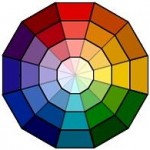There are a variety of brushes that range in size. The lip brush is generally one of the smallest and the powder brush is generally the largest. There are many more kinds of brushes of different sizes in between.
Make sure the brush you use is suited for the job. The best way to pick the right brush is to choose one that is a reasonable size and stiffness for what you are using it for.
- A stiff brush will deposit more colour and works well for a dramatic effect or precise application.
- A wide brush works well for applying colour to large areas and for blending.
- An angled or dome shaped brush works well for contouring or shading.
- A small to medium brush, angled or dome shaped of medium stiffness, works well for precise
work such as shading small areas.
I’m Kimberly Law, Professional Make-up artist. Watch the video and I’ll show you my 10 favourite make up brushes and tell you why:







